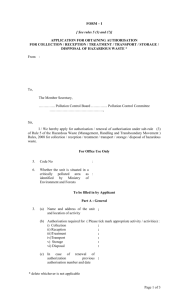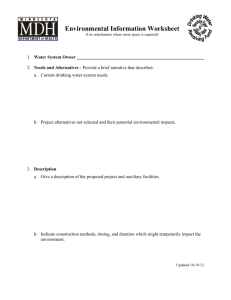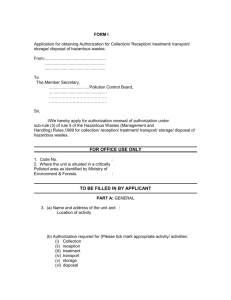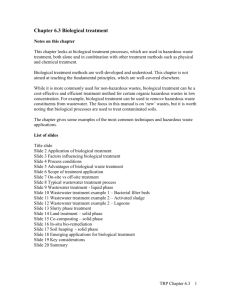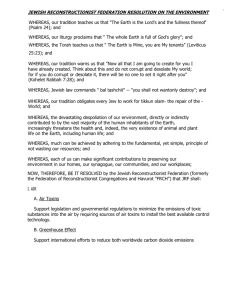Hazardous Wastes and Plant Growth
advertisement
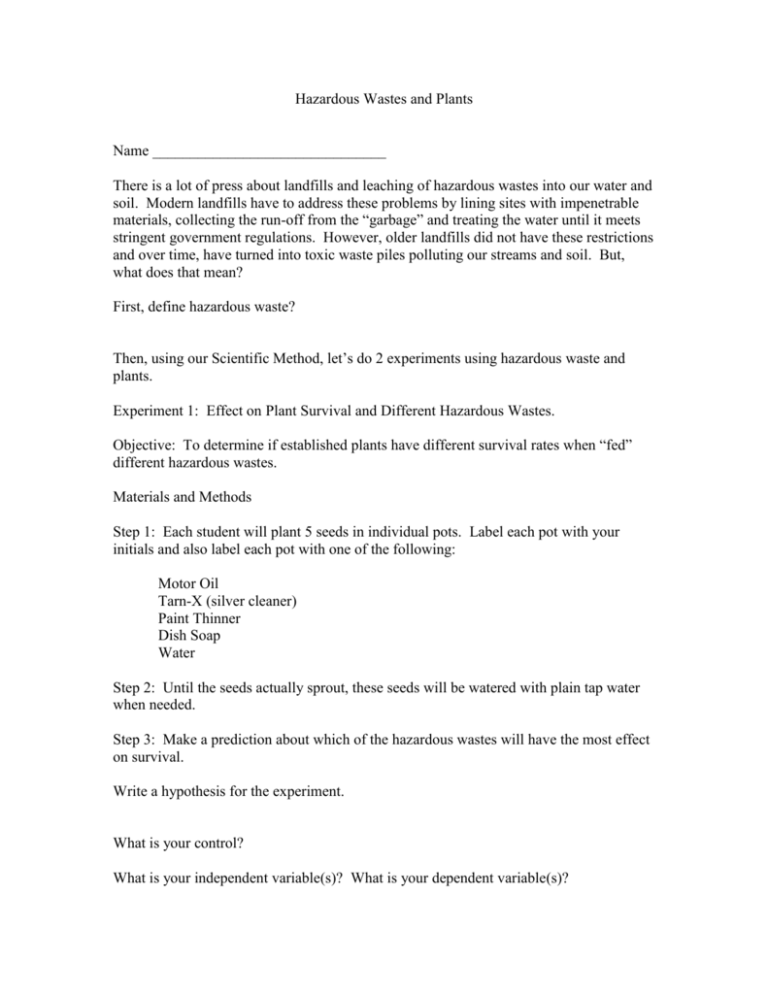
Hazardous Wastes and Plants Name _______________________________ There is a lot of press about landfills and leaching of hazardous wastes into our water and soil. Modern landfills have to address these problems by lining sites with impenetrable materials, collecting the run-off from the “garbage” and treating the water until it meets stringent government regulations. However, older landfills did not have these restrictions and over time, have turned into toxic waste piles polluting our streams and soil. But, what does that mean? First, define hazardous waste? Then, using our Scientific Method, let’s do 2 experiments using hazardous waste and plants. Experiment 1: Effect on Plant Survival and Different Hazardous Wastes. Objective: To determine if established plants have different survival rates when “fed” different hazardous wastes. Materials and Methods Step 1: Each student will plant 5 seeds in individual pots. Label each pot with your initials and also label each pot with one of the following: Motor Oil Tarn-X (silver cleaner) Paint Thinner Dish Soap Water Step 2: Until the seeds actually sprout, these seeds will be watered with plain tap water when needed. Step 3: Make a prediction about which of the hazardous wastes will have the most effect on survival. Write a hypothesis for the experiment. What is your control? What is your independent variable(s)? What is your dependent variable(s)? What other variables are you keeping “consistent” during this experiment? Step 4: Once plants are established, begin watering with diluted hazardous waste (remember, in nature the hazardous wastes would always be diluted with water unless it is found directly at the site of disposal). The class will decide on dilution, but all seeds need to be watered with the same dilution in order to have replicates. Why are replicates important in an experiment? Step 5: Water when necessary with correct dilution of hazardous waste. Monitor plant growth and survival. Step 6: Analyze Data Which hazardous waste had the biggest negative impact on plant survival? Look up these wastes online. Why do you think you achieved the results that you did? Did you accept or reject your hypothesis? If you had the opportunity to do this experiment again, what would you do differently and why? Experiment 2: Effect of Hazardous Wastes on Seed Germination Objective: To determine if different hazardous wastes alter a seeds germination ability. Materials and Methods Step 1: Each student will plant 5 seeds in individual pots. Label each pot with your initials and also label each pot with one of the following: Motor Oil Isopropyl Alcohol Paint Thinner Corrosive batteries Water Step 2. Water each seed with the corresponding diluted hazardous waste (dilution determined by class and used in both experiments). Step 3. Make a prediction about which hazardous waste will have the biggest affect on germination. Think about why you made that prediction? Write your hypothesis for this experiment: What is your control? What is your independent variable(s)? What is your dependent variable(s)? What other variables are you keeping “consistent” during this experiment? Step 4. Water when necessary with correct dilution of hazardous waste. Monitor sprouting success and survival. Step 5: Analyze Data Which hazardous waste had the biggest negative impact on seed germination? Look up these wastes online. Why do you think you achieved the results that you did? Did you accept or reject your hypothesis? If you had the opportunity to do this experiment again, what would you do differently and why?





